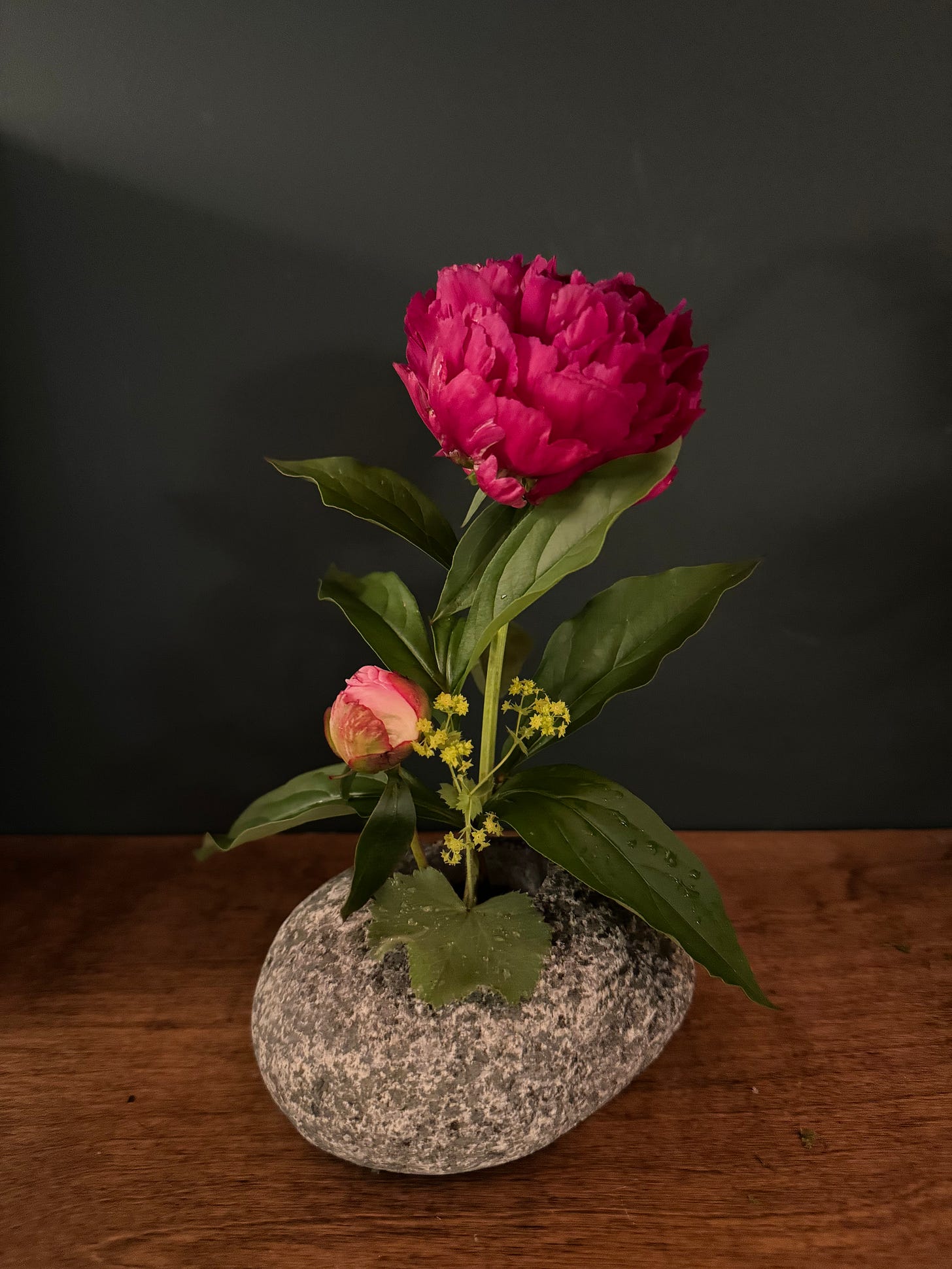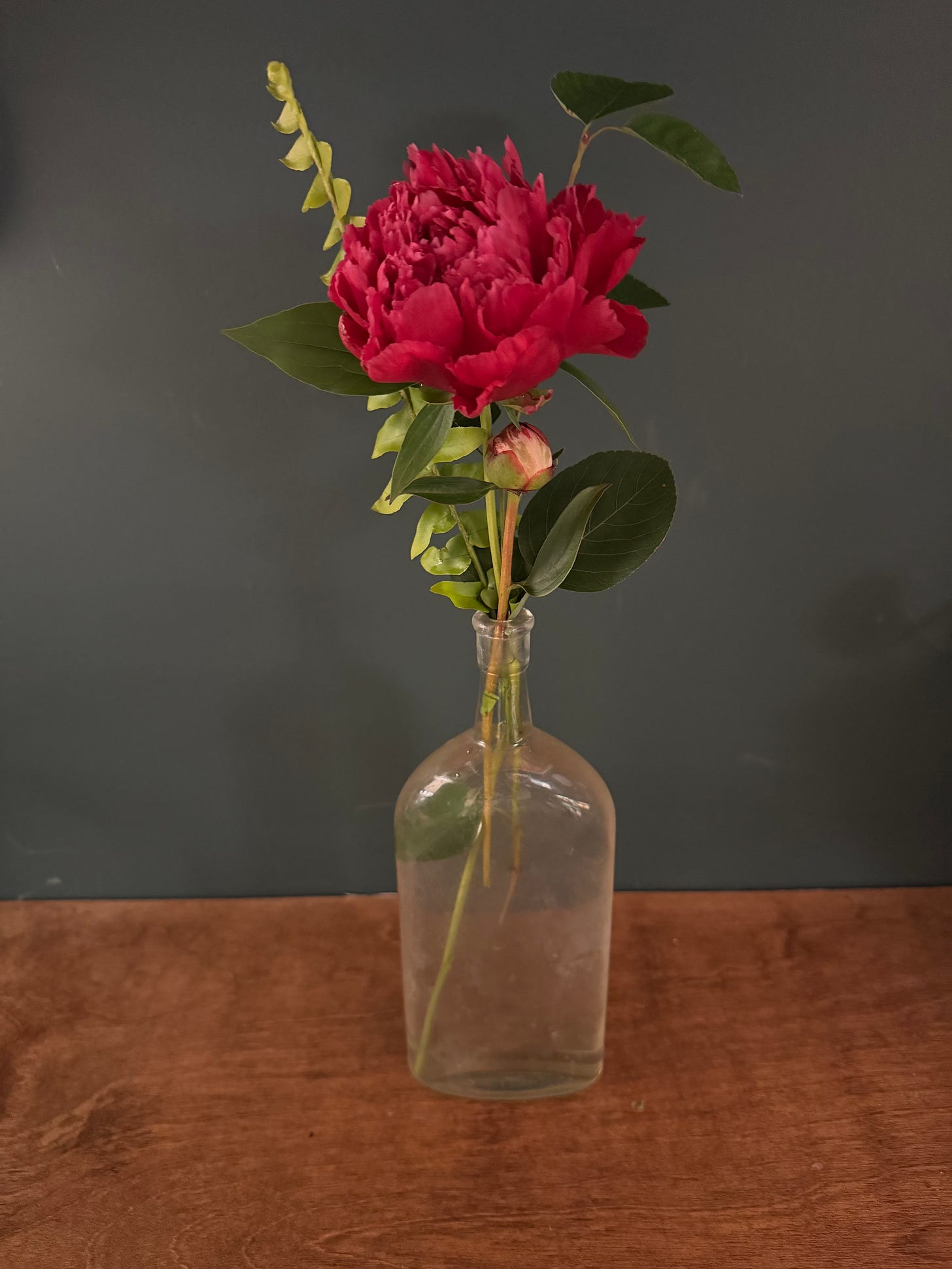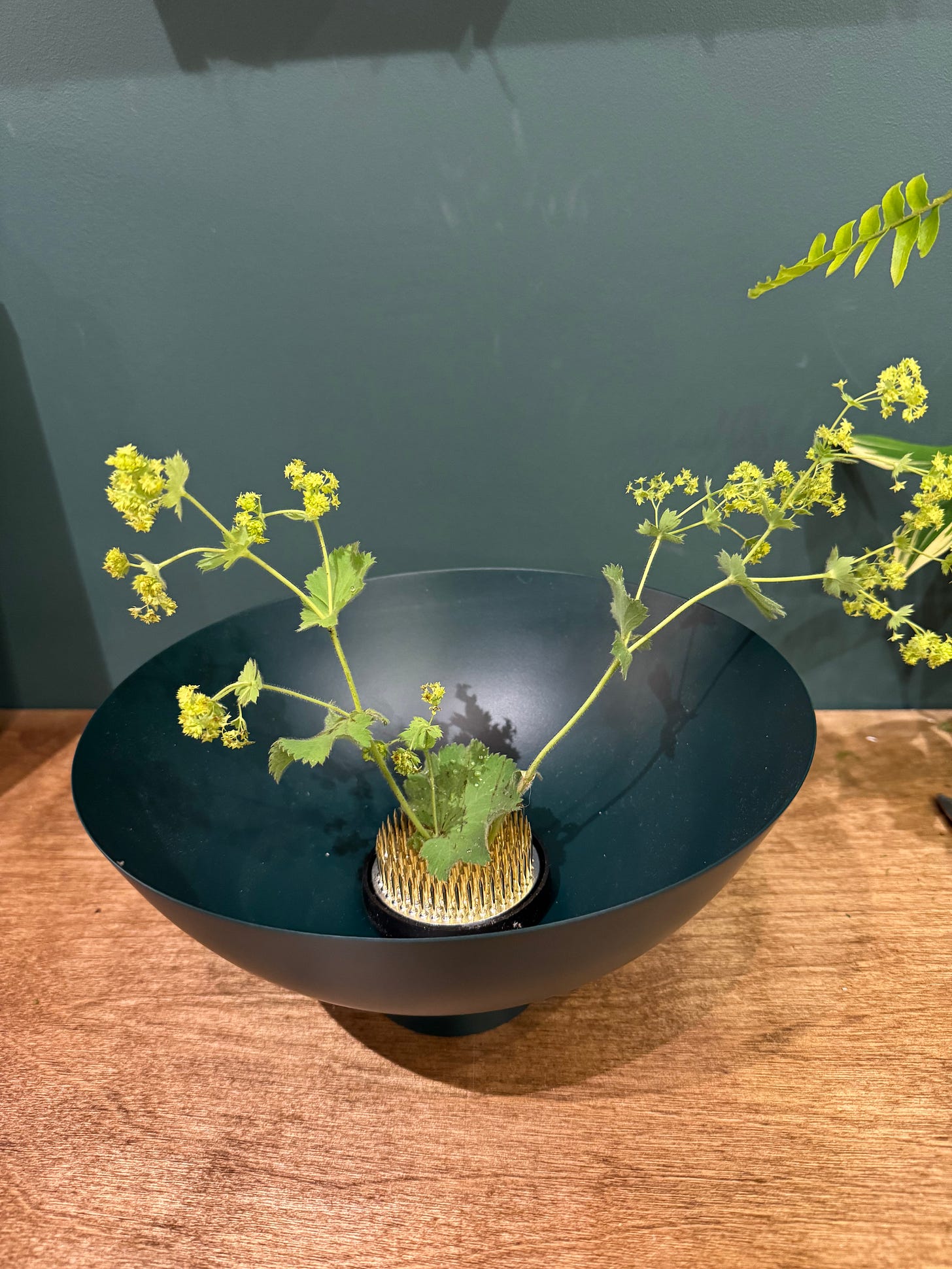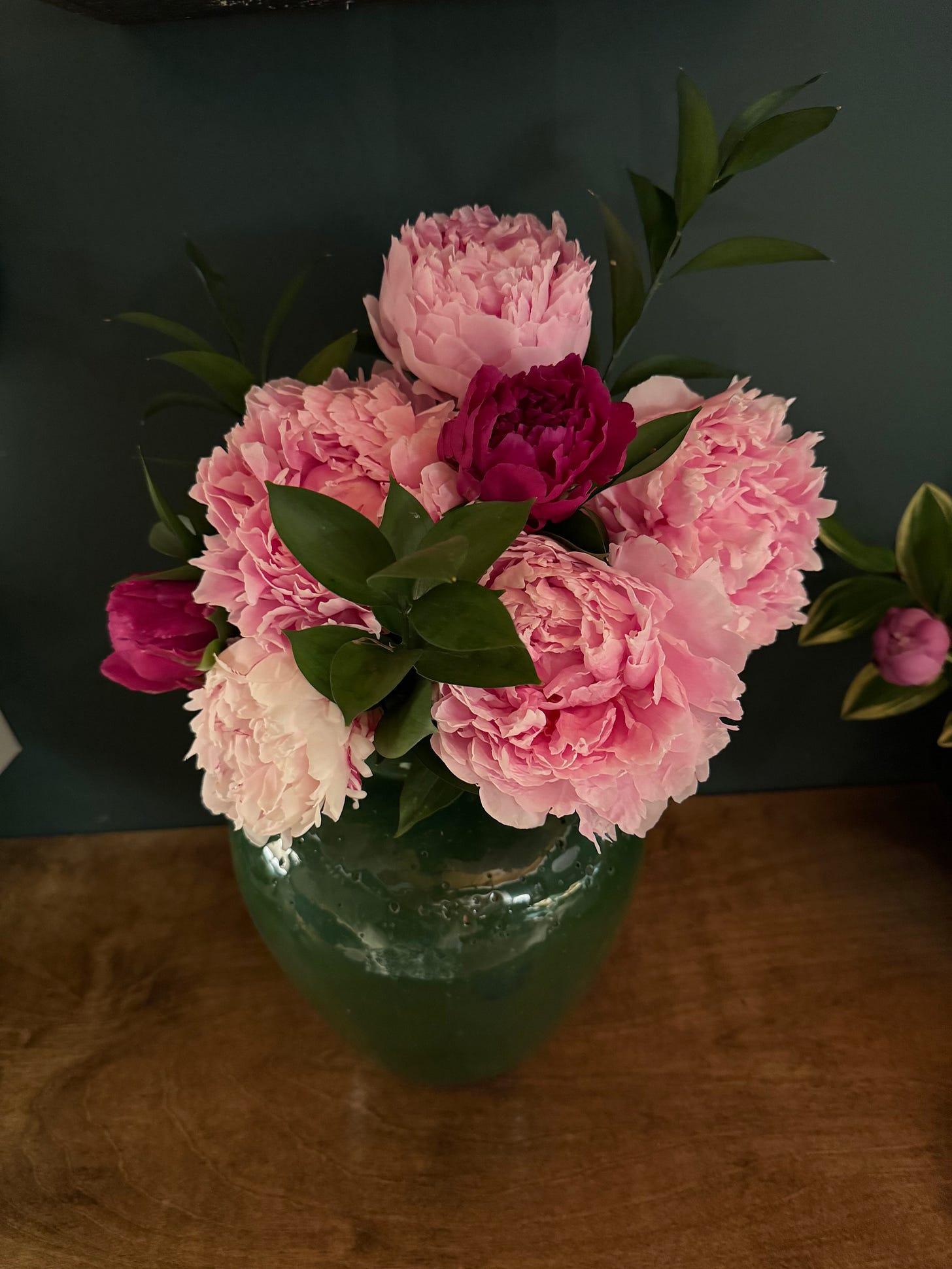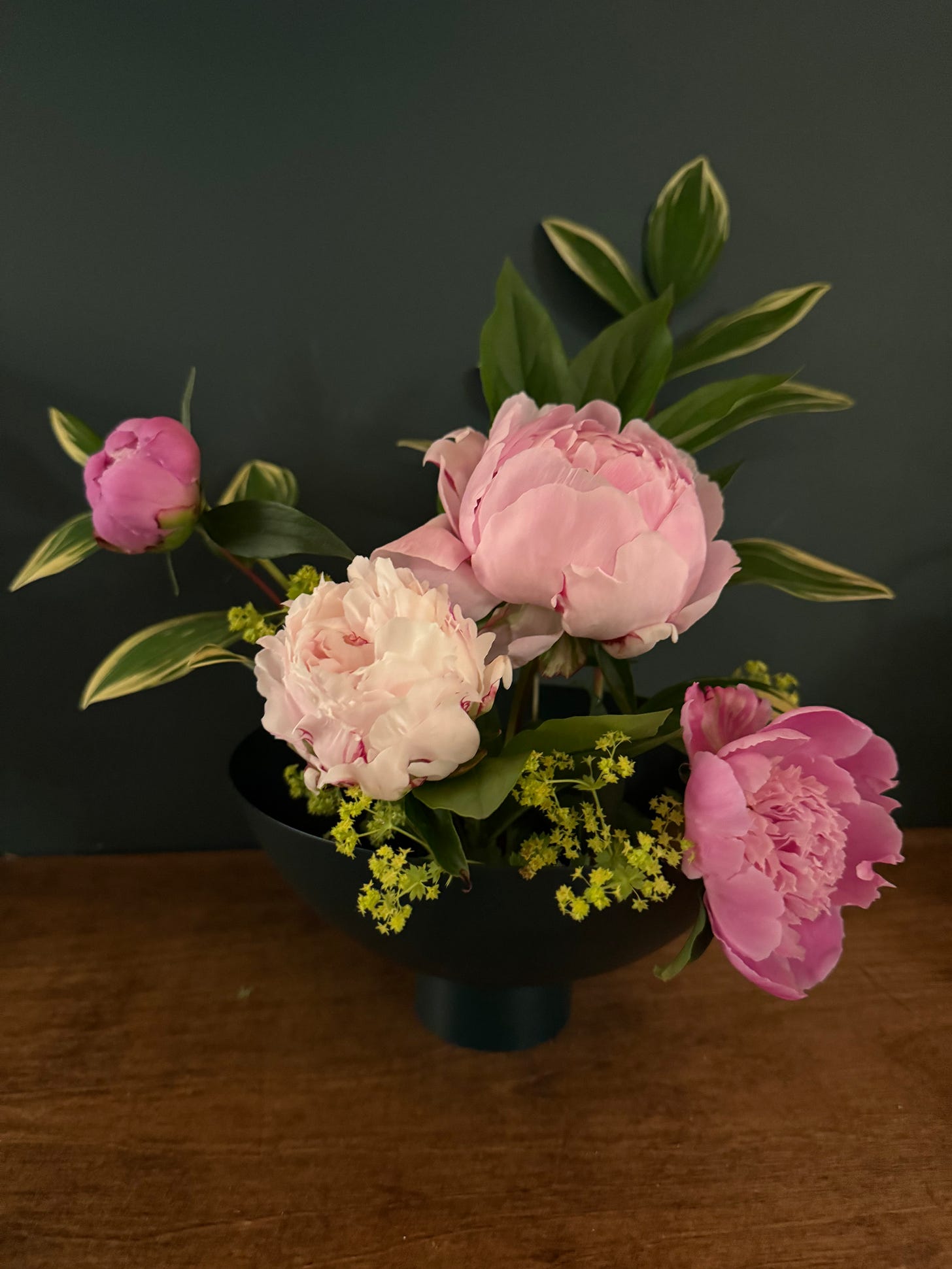JT: Who doesn't love the peony? It's arrival every year ushers in the start of summer, not the solstice but better, earlier...leaves have made their appearance, the grass is green, everything feels a little more hopeful. The early spring flowers— daffodils, lilacs—have come and gone and then this lovely, diverse, amazing harbinger arrives, the peony. Every yard is different, in mine, it comes with the full flourish of the hosta, another beloved perennial (one that you can eat by the way, but that is for another story). So for now, my love of the peony...
Many stories link this beauty to ancient Greece, my favorite? Zeus saves Paeon from Asclepius by turning him into a peony flower.
In Japan, peonies were mainly used for their medicinal properties. The peony's roots and seeds were frequently used to treat headache and asthma and to relieve pain associated with childbirth.
In modern times, we just enjoy them for everything they symbolize, love, honor, prosperity. Given on special occasions to express goodwill and joy. Here’s a few facts for the peony-nerds out there:
Some peonies can actually change color. Yep. You read that right. These are called coral charm peonies and they are absolutely magical!
A peony plant can live for more than 100 years.
If you’re feeling a little peckish, peony petals are edible.
Peonies love the sun and prefer at least 6 hours a day basking in the light.
Deer and bunnies hate peonies; but ants love them and will cosy up inside the buds (p.s. peonies don't need ants for their buds to open, something I heard as a child but is not true).
Most of my life has been spent cutting these blooms but in the last few years, I have enjoyed them more in their natural habitat; sometimes bent over, sometimes messy, sometimes clumped, but always beautiful. Of course cutting them and turning them into gorg arrangements around your house is inevitable, but not always easy. Peonies are heavy and often easiest to arrange clumped together, but that is not my favorite option because clumping them in arrangements takes away from the beauty of each bloom.
So below are my tips and tricks for how to bring these spectacular flowers inside and turning them into perfect arrangements; but before we talk about arranging, let’s talk about cutting:
I’m always tempted to wait until the blooms are big and beautiful before cutting them but resist that temptation as fully opened peonies will not last long that way. The ideal time to harvest peonies is when they are in the bud stage as the bud casing is beginning to open, before the first petal has emerged, and when they feel soft like a marshmallow as they are gently squeezed.
Cut the stems at a 45% angle (that allows for the most water absorption). Also, the best time to get out there and cut is first thing in the morning or at the very end of the day when temps are the coolest. Once cut, lukewarm fresh water in a clean vase is best!
Now for the arranging. Peonies will look beautiful no matter how they are arranged but I have a few ways that I prefer to enjoy them and truthfully, it’s rarely in a big arrangement clumped together.
The Single Stem
Every bloom is different, I look for the ones that speak to me and I single them out so they stand on their own. You can do this by backing them with a different selection of cuttings or, and this is perhaps my best tip, by showcasing the peony by arranging with the leaves themselves.
No matter what arrangement you use, always clip off the lower leaves but don’t toss them! They are the best filler for arrangements of every kind and I use them long after the peonies have come and gone.
The Flower Frog
This is perhaps my favorite and coolest way to arrange any flower but specifically the top heavy peony. There are a few ways to use a flower frog: I like the heavy metal (and super sharp) ones that are often used for Ikebana arranging. The sharp spikes allow you to secure the desired position for the weightiest bloom. These frogs come in many sizes and weights, the heavier the bloom, the heavier the frog should be. Sometimes you can find them in vessels already making for a quick, easy, and always stunning arrangement. I usually choose the frog for the vessel and it sort of designs itself.
The Baby’s Got Back
Probably most tempting arrangement choice for many is the larger peony arrangements. If you’re lucky enough to have many different types and colors of peony in your garden, then this is an impactful arrangement and can really be a showstopper. My advice here is to think about height for each bloom and choose another flower or green to act as a filler. Catnip blooms around the same time as peony and can be a beautiful and airy addition. The same with Lady’s Mantel, whose lime green flowers look amazing alongside the peony. Ferns can also add a little bit of green, but ultimately any of these choices will help avoid ending up with a mound of flowers, while making your arrangement more interesting.
My last tip is this: Each stage of a peony’s life is pretty special so I try to think about that when I cut them. While a tight, hard bud rarely blooms after being cut, I like to use them in my arrangements as well.
So go out there and enjoy these amazing blooms!





